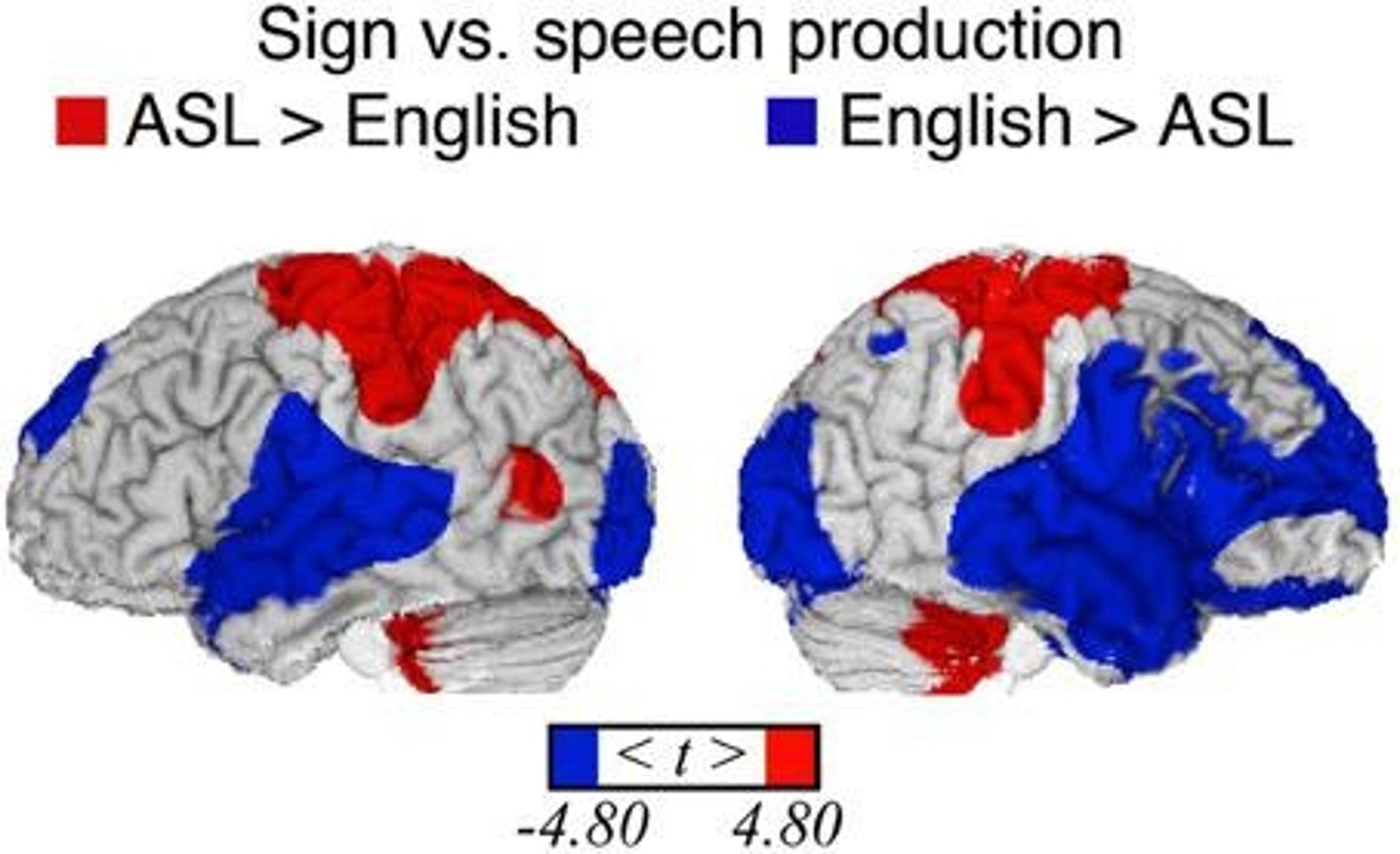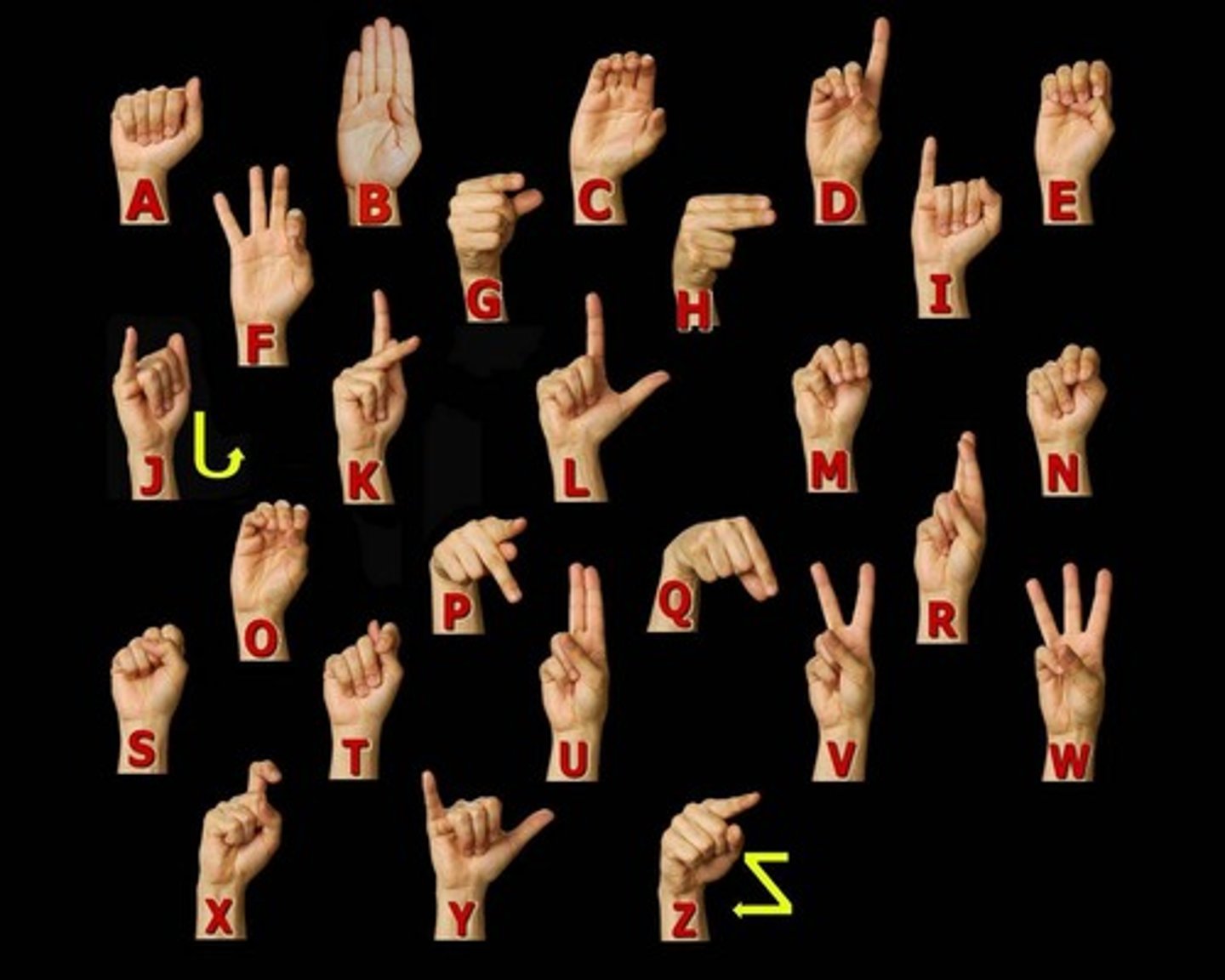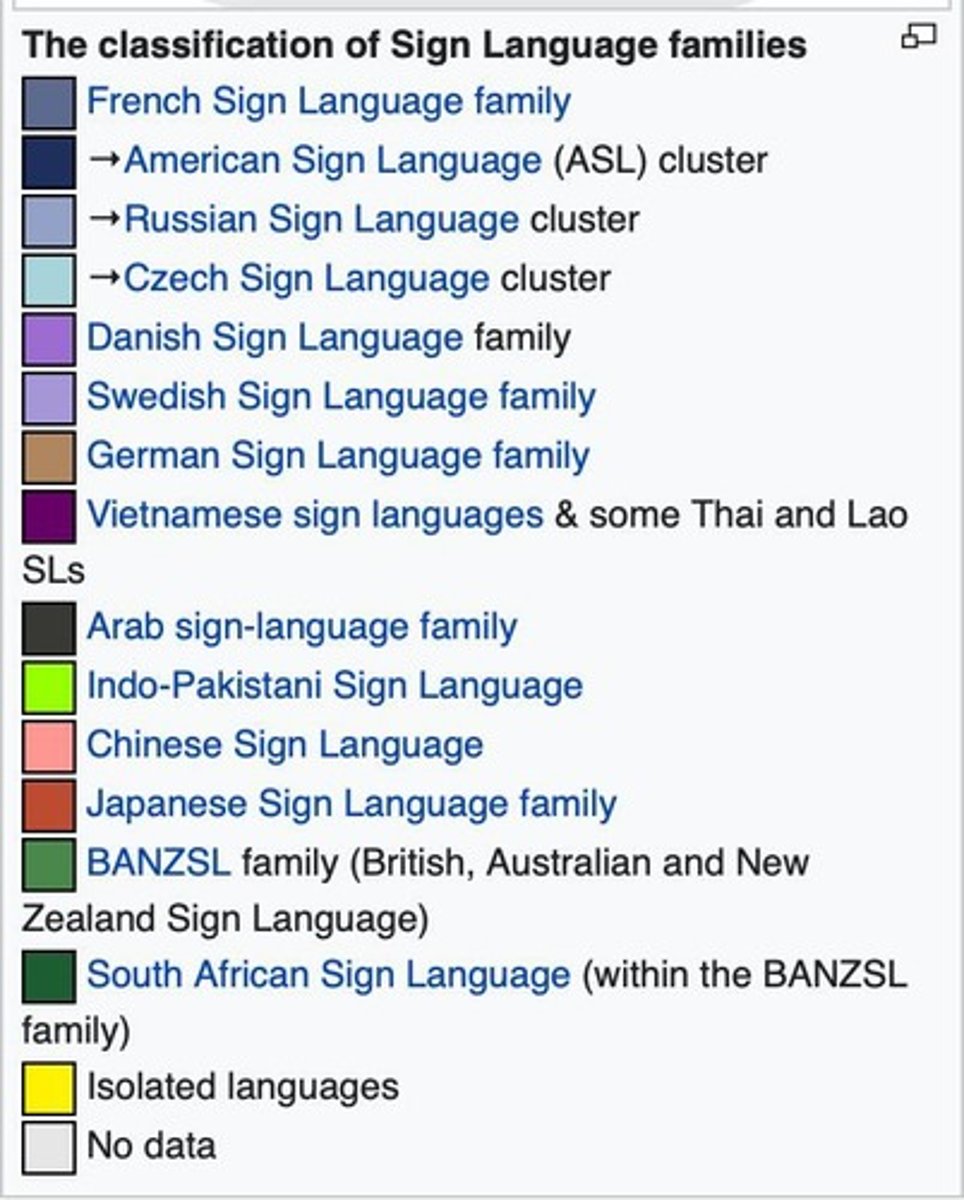Understanding American Sign Language and Deaf Culture
1/22
There's no tags or description
Looks like no tags are added yet.
Name | Mastery | Learn | Test | Matching | Spaced |
|---|
No study sessions yet.
23 Terms
Sign languages
Natural languages that use the same linguistic features found in spoken languages: they have phonological, morphological, and grammatical features.
Manually Coded English (MCE)
A signed system that is not a natural language.
Signing Exact English (SEE1, SEE2)
A signed system that is not a natural language.
Conceptually Accurate Signed English (CASE)
A signed system that is not a natural language.
Pidgin Signed English (PSE)
A signed system that is not a natural language.
Natural languages
Expressions of the human language faculty that are acquired within a critical period.
Critical period
A time frame during which children must receive appropriate and accessible linguistic input to learn language to native-like proficiency.
Children of Deaf Adults (CODA)
Children who are hearing and have Deaf parents.
Phonological features
Features of sign languages that include the position, configuration, and movement of the hands.

Morphological features
Features of sign languages that involve word composition.
Grammatical features
Features of sign languages that include phrases, sentences, and questions.
American Sign Language (ASL)
An autonomous linguistic system, not related to English, and a natural language that can express complex, abstract thoughts.
Fingerspelling
A system in ASL using 26 different hand shapes corresponding to the English alphabet for proper names or words with no existing signs.

Deaf community
A cultural and linguistic community that includes both deaf and hearing people, sharing traditions, values, and experiences.
Cochlear implants
A mechanical prosthesis for the inner ear that bypasses the bones of the inner ear and stimulates the auditory nerve.
Cochlear implants controversy
Debate surrounding cochlear implants, which some view as pathologizing deafness and promoting oralism.
Oralism
The belief that spoken languages are superior to signed languages and that deaf people should be taught to speak and read lips.
Martha's Vineyard, MA
The location where the history of ASL in the U.S. begins (late 17th century).
First American School for the Deaf
Founded in 1817 in Hartford, CT.
Thomas Hopkins Gallaudet & Laurent Clerc
Founders of the American School for the Deaf.
French (Parisian) Sign Language
The European sign language that ASL is based on.

1880
The year ASL was forbidden from being taught in schools.
ASL survival
ASL survived despite the oralist education.